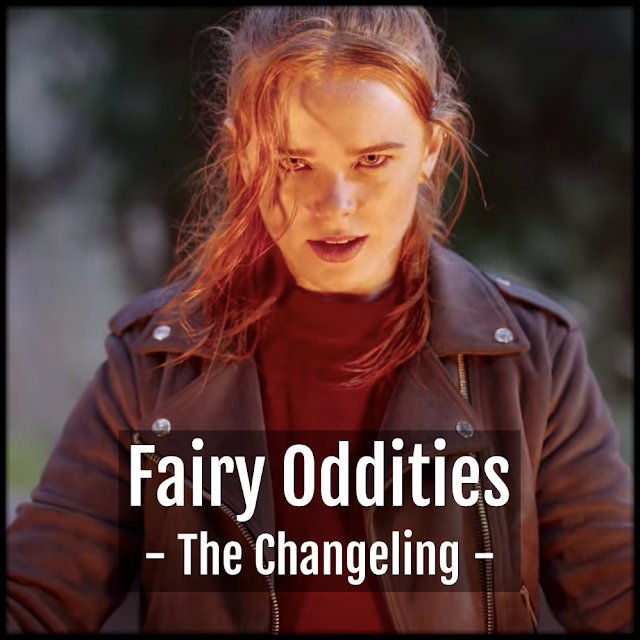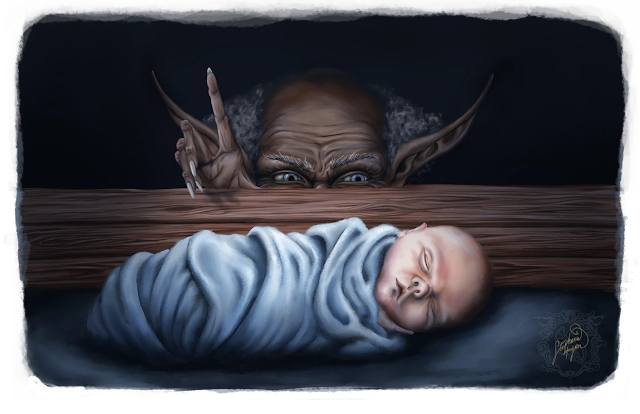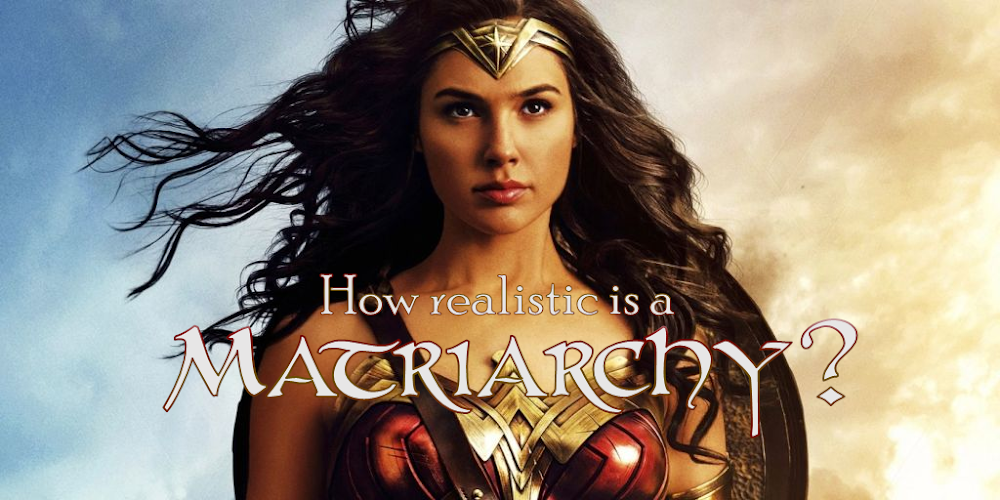Fairy Oddities - The Changelings
Today's topic isn't specifically a type of fairy (or a myth circle about fairies), rather a phenomenon linking us to this blog's origins (about myths founded on rare or misunderstood medical conditions) while still remaining in the court of these many-faced spirits. The fairies definitely have a bright side, as cute little winged creatures, or oversexualized sexy bad guys (I’m looking at you SJM), but there are some very dark tales and legends surrounding them. So today, let me introduce to you the strange occurence that was the Changelings.
In Europe, people believed that fairies could (and most definitely would) kidnap babies from their cradle and replace them with either a young of their own, or a fairly old fairy to live his last days with a caring family. This fairy baby is the changeling. But how could someone think that their child was in fact a changeling?
In old times, when fitting in with society was literally a matter of life and death, anything strange about a child was diagnosed as not being human. And a large part of Europe, anything not human was a fairy, so they put two and two together to get a horribly wrong answer. If the child was born with a caul (part of the amniotic membrane ont he child face) – fairy. If they had deformities or paralyzed limbs – fairy. If they were somehow ill from birth – fairy! A child refused to grow, or had facial hair before the appropriate times? What do you mean hormonal imbalance? It’s obviously a fairy.
But even when the child seemed normal at first, the fairy traits could also appear later. If they had problems with communication, or behaved strangely among people, then the child wasn’t autistic (like we now know), it was a fairy. If the child was mischievous, nobody thought they just need more attention or have some serious problems at home, people immediately jumped to the conclusion of fairies. They ate too much but work too little? The fairies wanted to eat the family out of their riches.
Now, such a widespread delusion problem obviously needed a solution, and our simple predecessors found plenty.
They figured fairies are just as shallow as some humans, so they only take the most beautiful (meaning blond and blue-eyed) children, so they guarded these children with incense and iron (remember how we talked about iron being the weakness of fairies in our last post?). In Scandinavia they blamed trolls for similar things fairies were blamed in the West (basically, like with fairies, everything slightly out of the ordinary was a troll, from horrid monsters to a bit too clever women), including child kidnapping. Their solution was Christianity, since they believed only the unbaptized children were taken, so they hurried into a church as soon as the newborn saw the light of day. (I personally find it quite funny how they were so devoted in Jesus Christ, yet still believed trolls were a thing - Darr)
When the protection failed (or the fairies beat the parents to their child), belief held that one could attempt to force the fairies return the original baby by making the changeling laugh - or torturing it. Yes, torturing. It was a very fine excuse for child abuse. A more humane (in comparison, but still cruel) solution was to just leave children in the wilderness to their fate. The most positive method was simply loving the fairy baby so the kidnappers won't hurt the original (some people thought these creatures had... feelings and compassion; weird)
Humans are really the worst, most terrific monsters of all. I know they didn’t have the knowledge to explain these strange occurrences or not neurotypical behavior, and they didn’t have the resources to take care of the disabled and everyone who couldn’t help in the fields just ate up the resources, but still.
But what did fairies do with these babies anyways?
Well, some believed that fairies used them as servants, some thought they just wanted a human child to love and care about, and sometimes they did it just to screw over people. In Shakespeare’s Midsummer Night’s Dream the fairy king and queen, Oberon and Titania, are at odds with each other over a changeling child. Titania stole the baby from India and Oberon is jealous of Titania’s attention towards the boy, so he tries to make this changeling into his personal servant. In Scottish folklore, the children might be replacements for fairy children as a tithe to Hell, a sacrifice they offer to literally Hell every seven years. This is best known from the ballad of „Tam Lin” (if you remember that name from somewhere, it's because there's nothing new under the Sun). Other tales suggest human children were used to refresh the fairy bloodline, spice it up with some new genes–when they grow up of course.
Fairies would also take adult humans, especially the newly married and new mothers. Young women were taken to marry fairies instead—if you were curious where this trope originated—while new mothers were often taken to nurse fairy babies, because human milk is good for them.
Often when an adult was taken instead of a child, an object, such as a log, was left in place of the stolen human, enchanted to look like the person. This illusion of the person would seem to sicken and die, to be buried by the human family, while the living human was among the fairies. Bridget Cleary is one of the most well-known cases of an adult thought to be a changeling by her family, her husband killed her attempting to force the fairies to return his 'real' wife. It happened in 1895, so this story didn’t save him from prison, but it might have had a hundred years earlier. On a medical note, believing a member of your family was replaced by someone identical looking, but still different, is a common trait of adult paranoid schizophrenia, so nowadays we have treatment for these type of changelings.
I don’t know about many modern literary works using the changeling myths. I already mentioned Midsummer Night’s Dream, but it’s old, and there is also an episode in the Hellboy comics, when he has to deal with a changeling. You might also argue the Dryads in The Witcher work somewhat similar, although they don't leave a replacement child, just take a human and turn it into another dryad. And the most recent is, I think, Bloom from Fate: The Winx Saga, who is herself a changeling fairy living in the human world. I think it could be a very good basis for fantasy novels if someone wants a new take on fairies.
Cheers,
Lory






Comments
Post a Comment